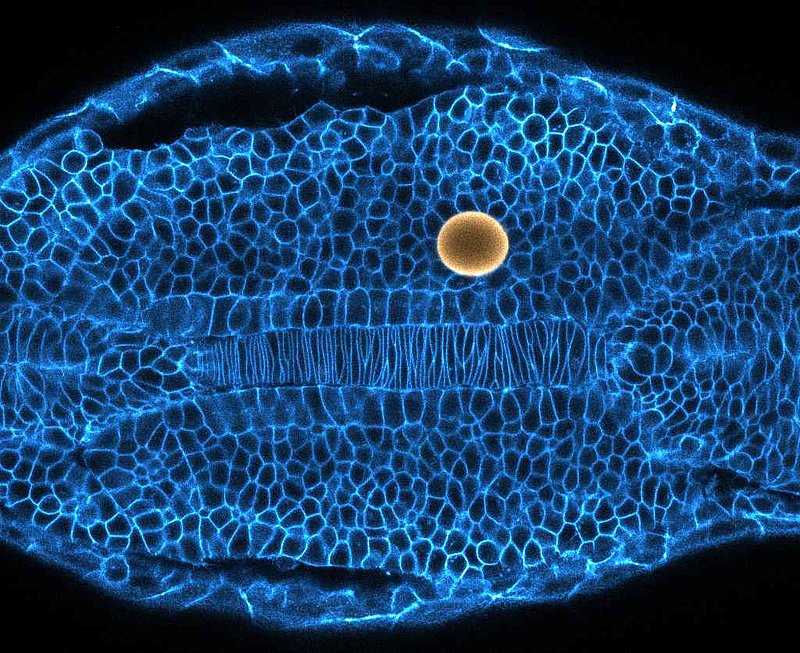Mechanics and morphogenesis of embryonic development

The extension of the anteroposterior body axis is an essential morphogenetic process in vertebrate development, defining the elongated structure of the embryo from which many other embryonic structures emerge. Using our microdroplet techniques, we discovered the existence of a fluid-to-solid transition in the tissue physical state along the anteroposterior body axis that enables posterior body elongation. Specifically, posterior tissues transition from a fluid-like behavior at the extending end, the mesodermal progenitor zone, to a solid-like behavior in the presomitic mesoderm. Our results showed that higher actomyosin-driven tension dynamics 'melt' (fluidize) posterior tissues, enabling its remodeling during axis elongation. As body elongation proceeds, cells progressively become less active, ‘freezing’ (rigidifying) the tissue into a solid-like state that sets its shape. Our data showed that the fluid-to-solid transition in the tissue state was caused by jamming of the cellular tissue architecture, mimicking transitions in inert systems like foams, emulsions or colloidal glasses. Altogether, we found that unidirectional axis elongation is physically similar to glass molding. We are currently studying whether this new physical mechanism of morphogenesis, in which spatiotemporal variations in tissue fluid/solid states guide morphogenetic flows to shape the embryo, occurs in other instances of tissue morphogenesis.
In addition to understanding the physical processes underlying axis elongation, we are currently studying the connections between tissue mechanics, cell behavior and signaling events. Our goal is to obtain a quantitative, holistic view of embryonic axis formation, connecting cell type specification to morphogenesis.